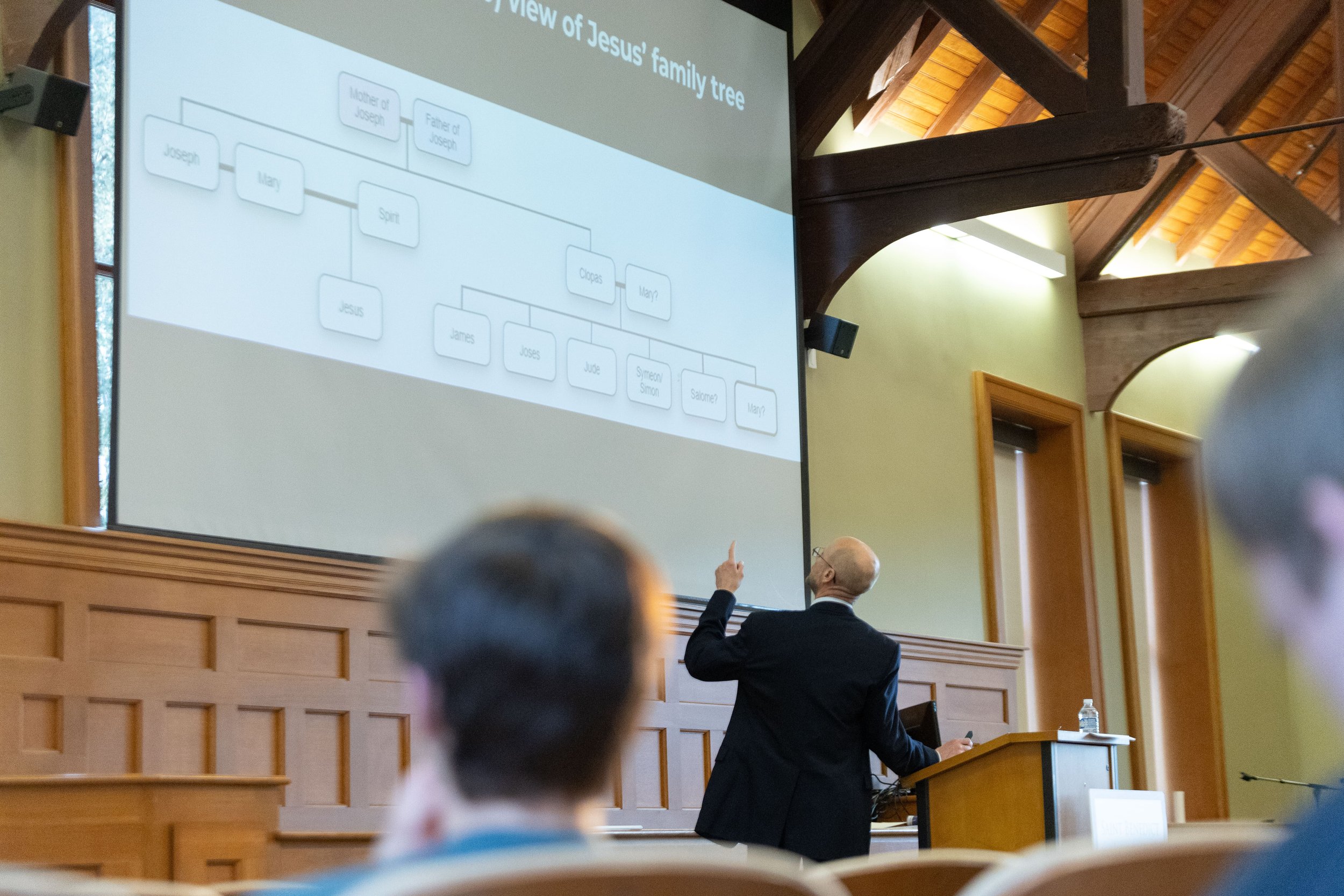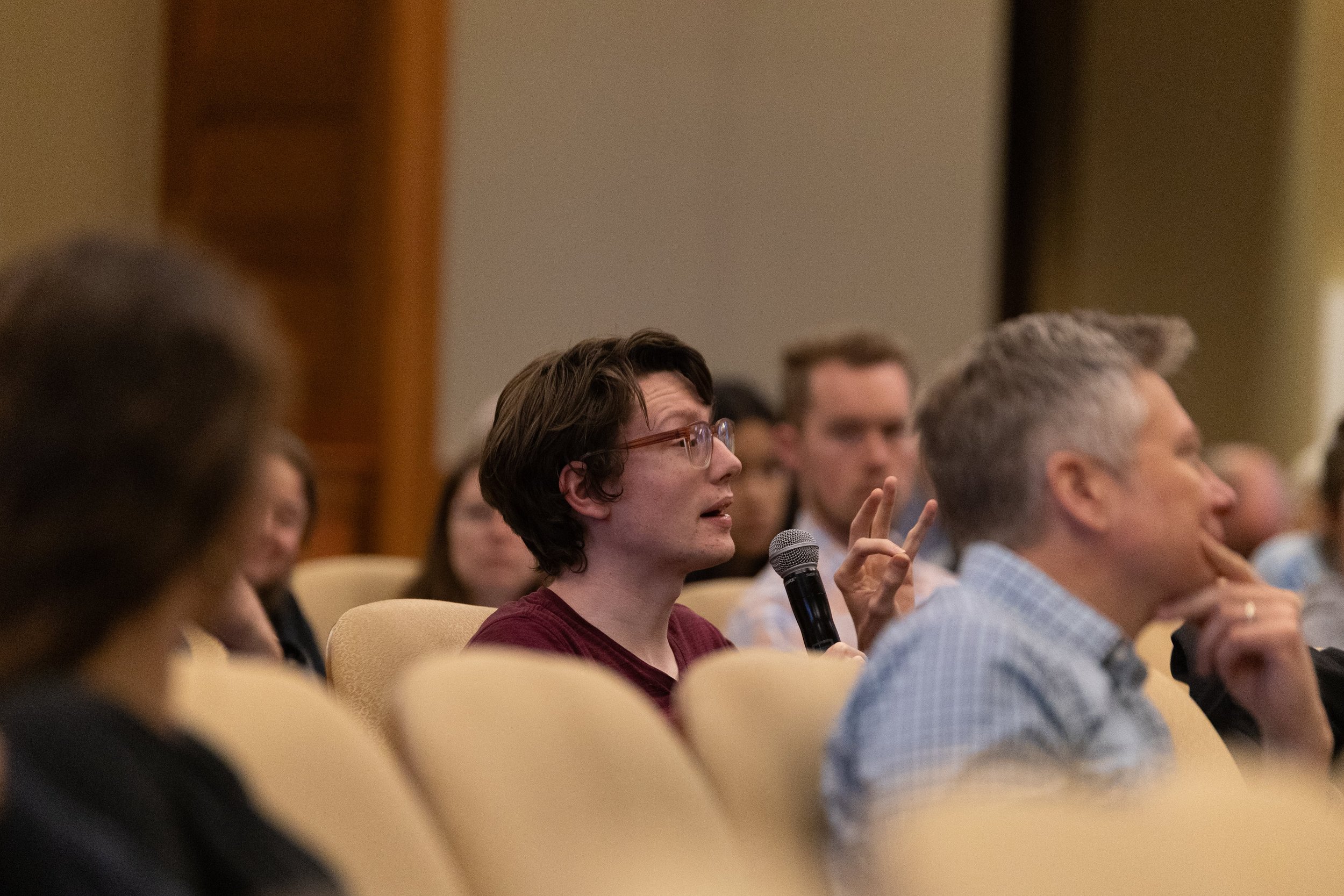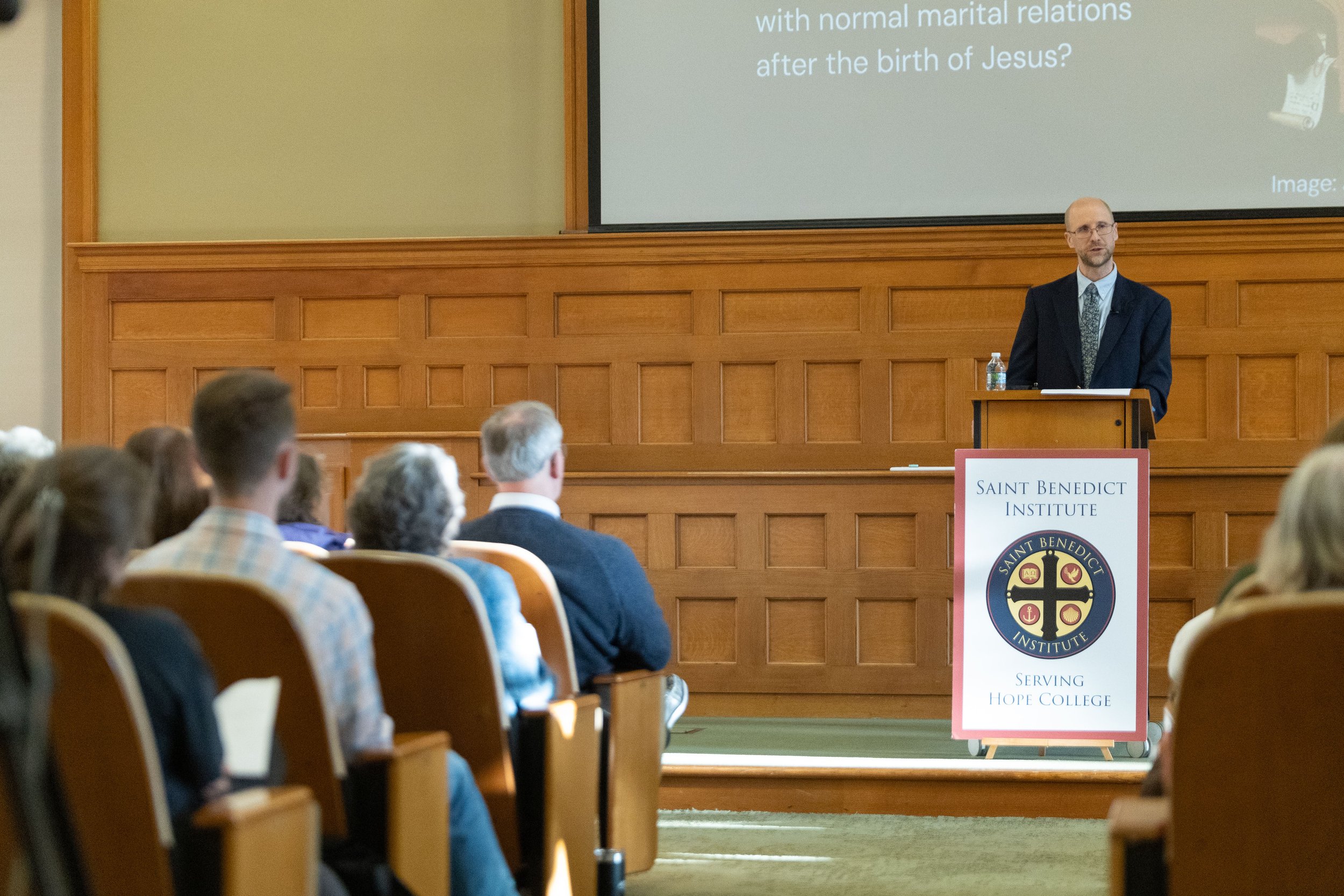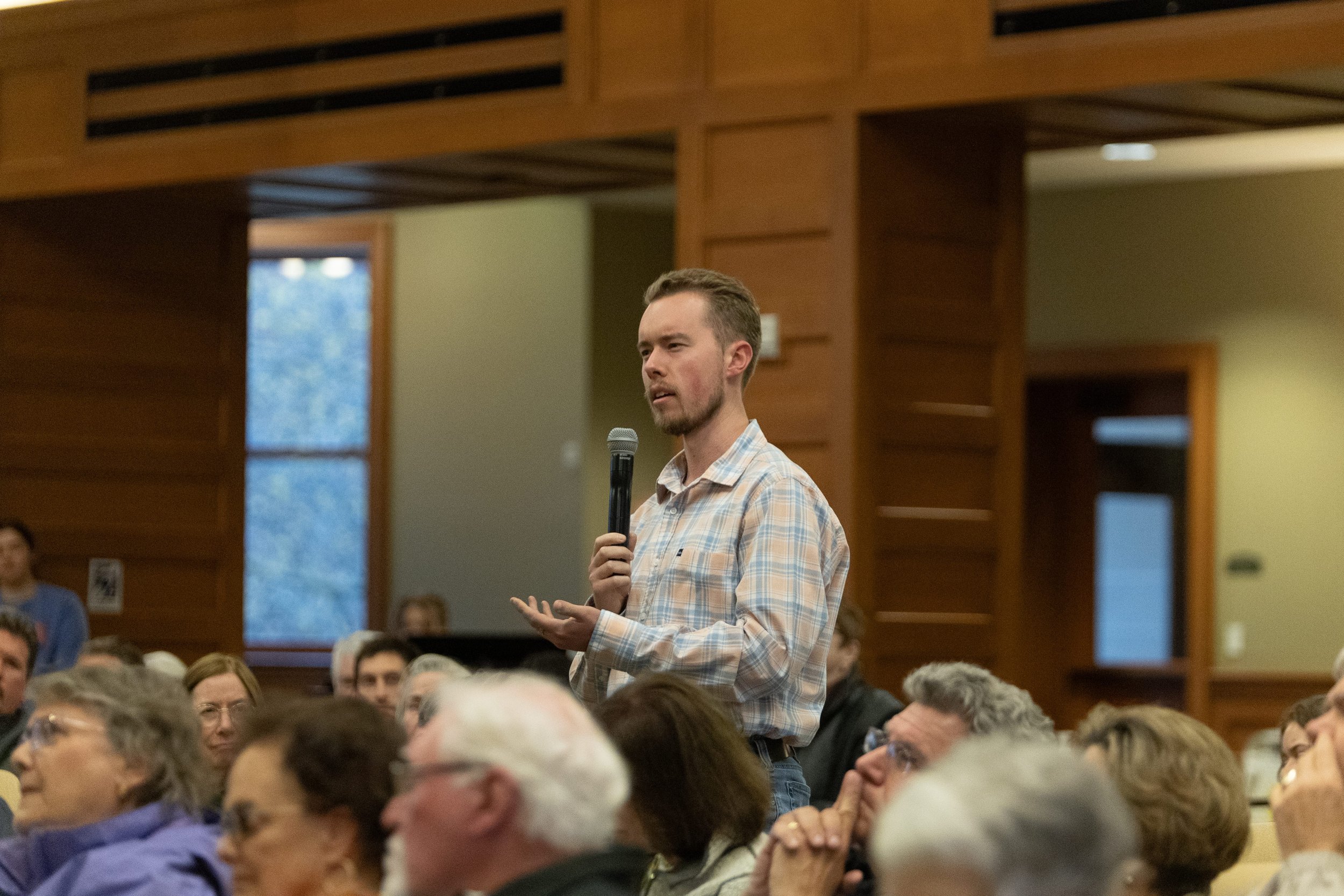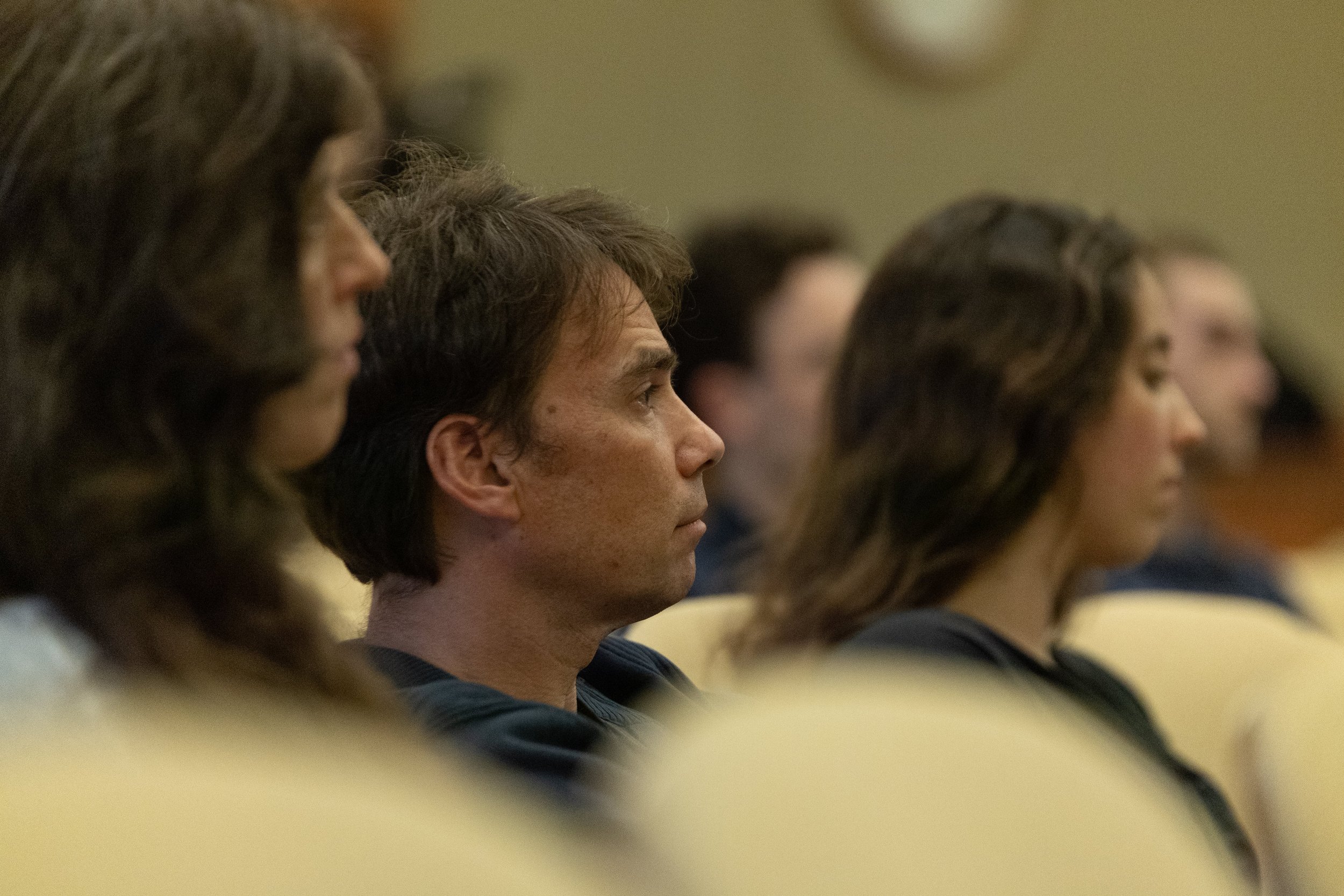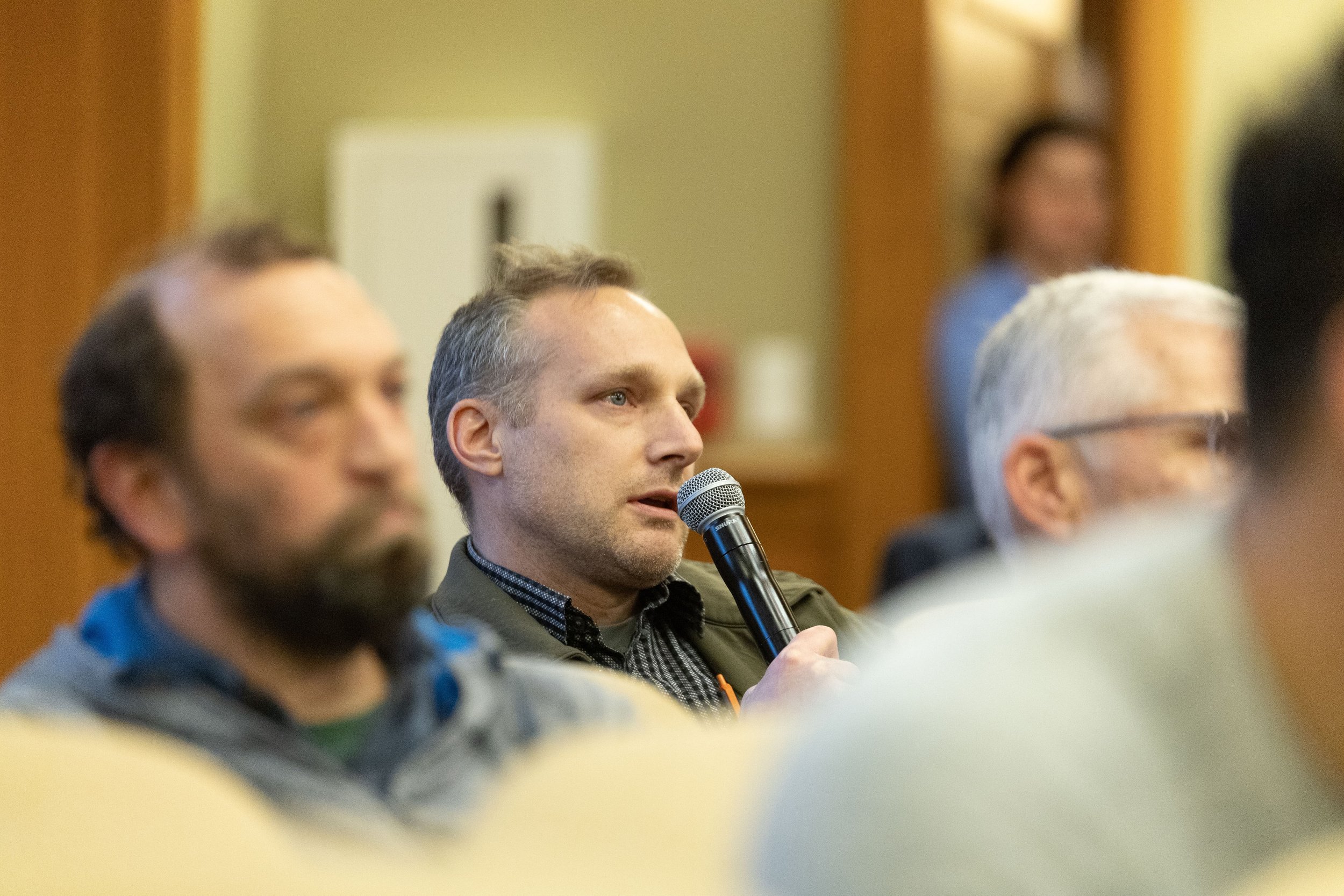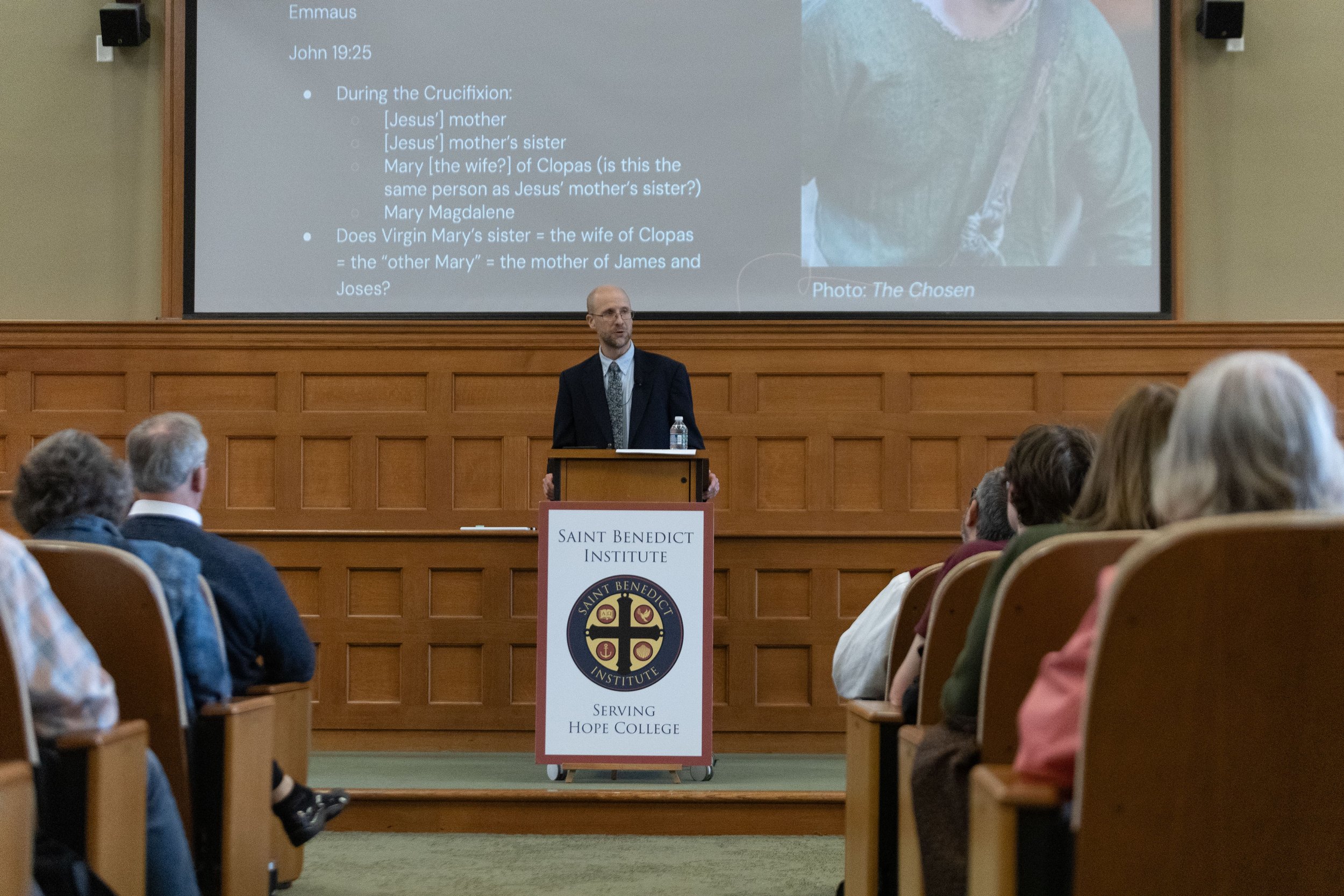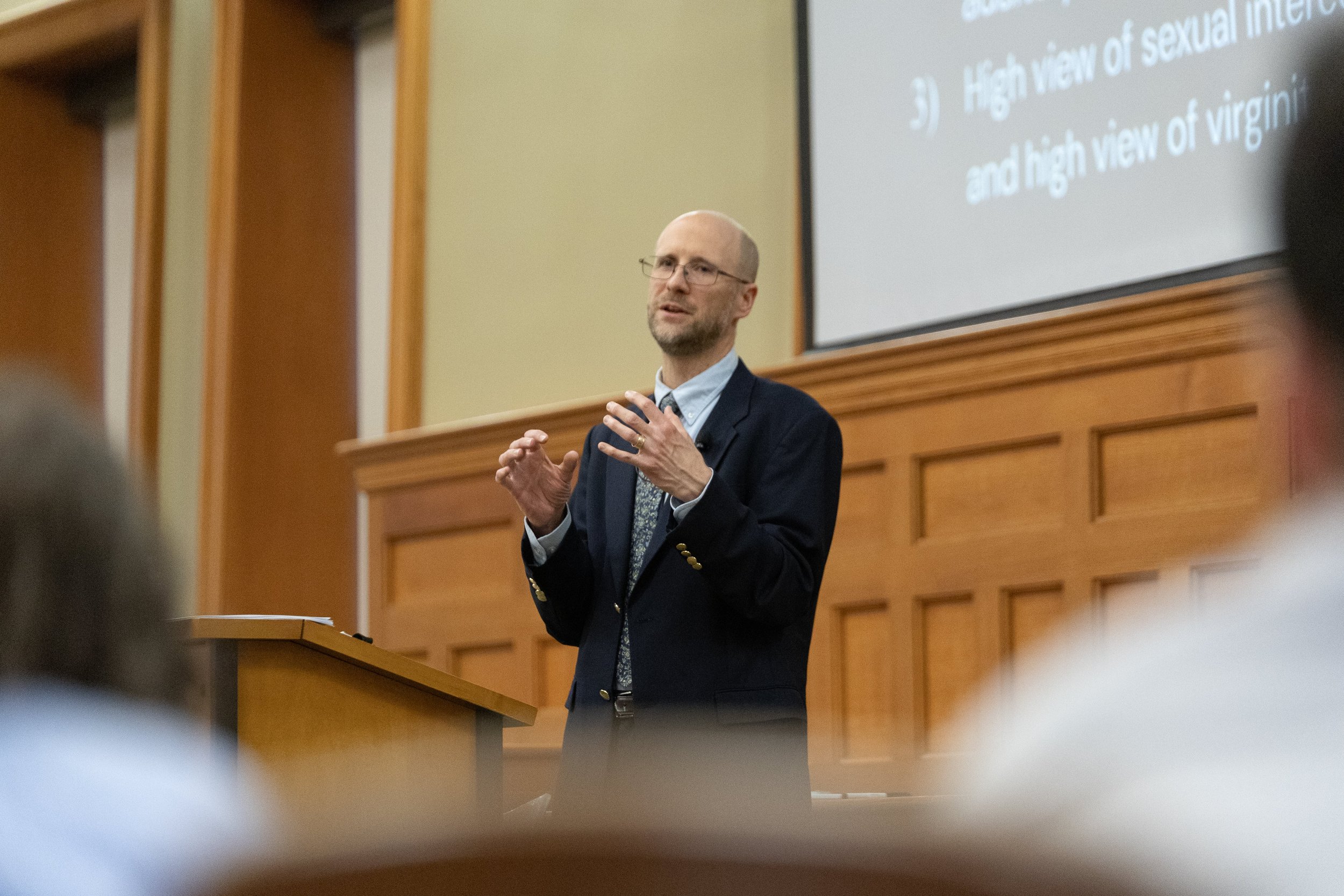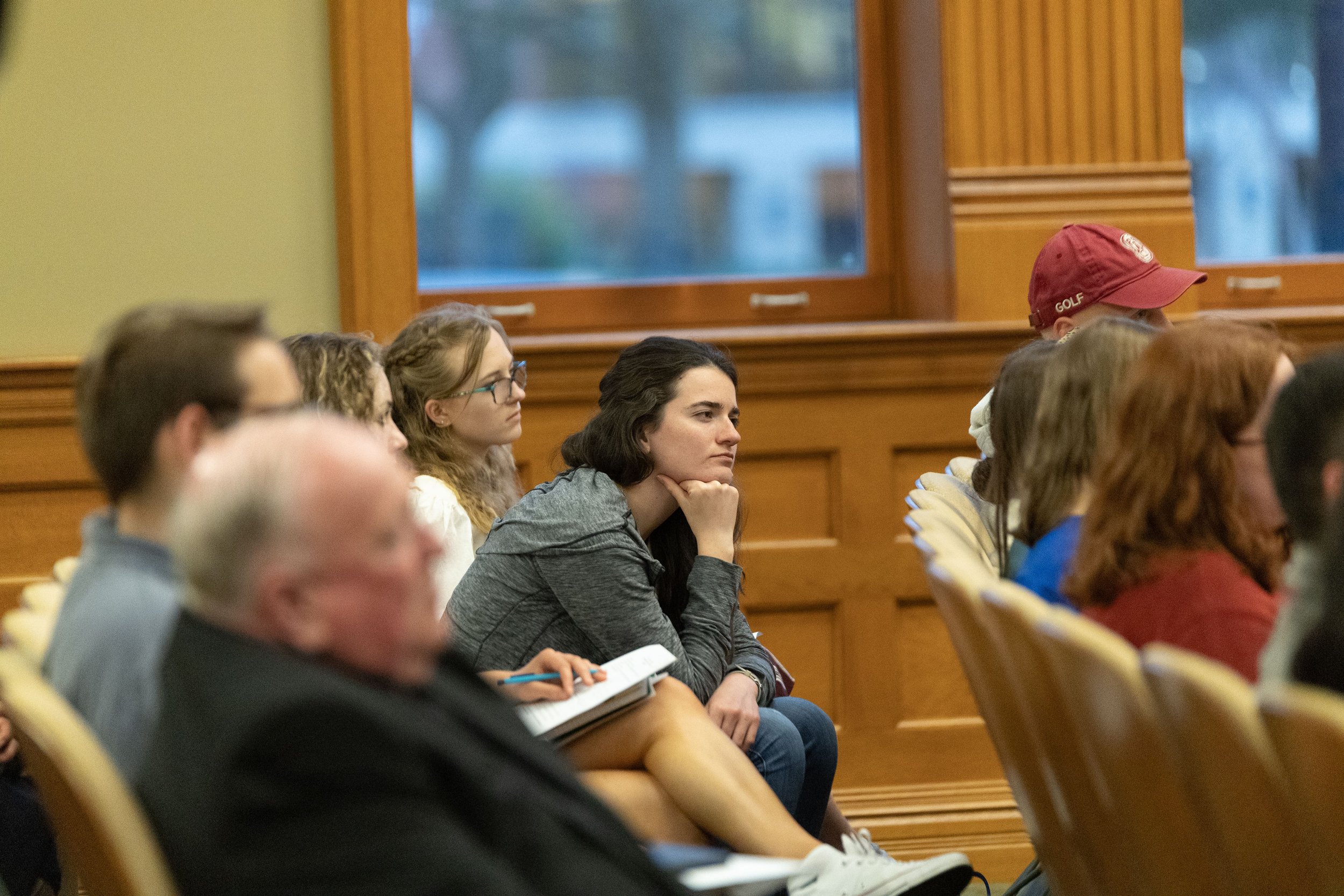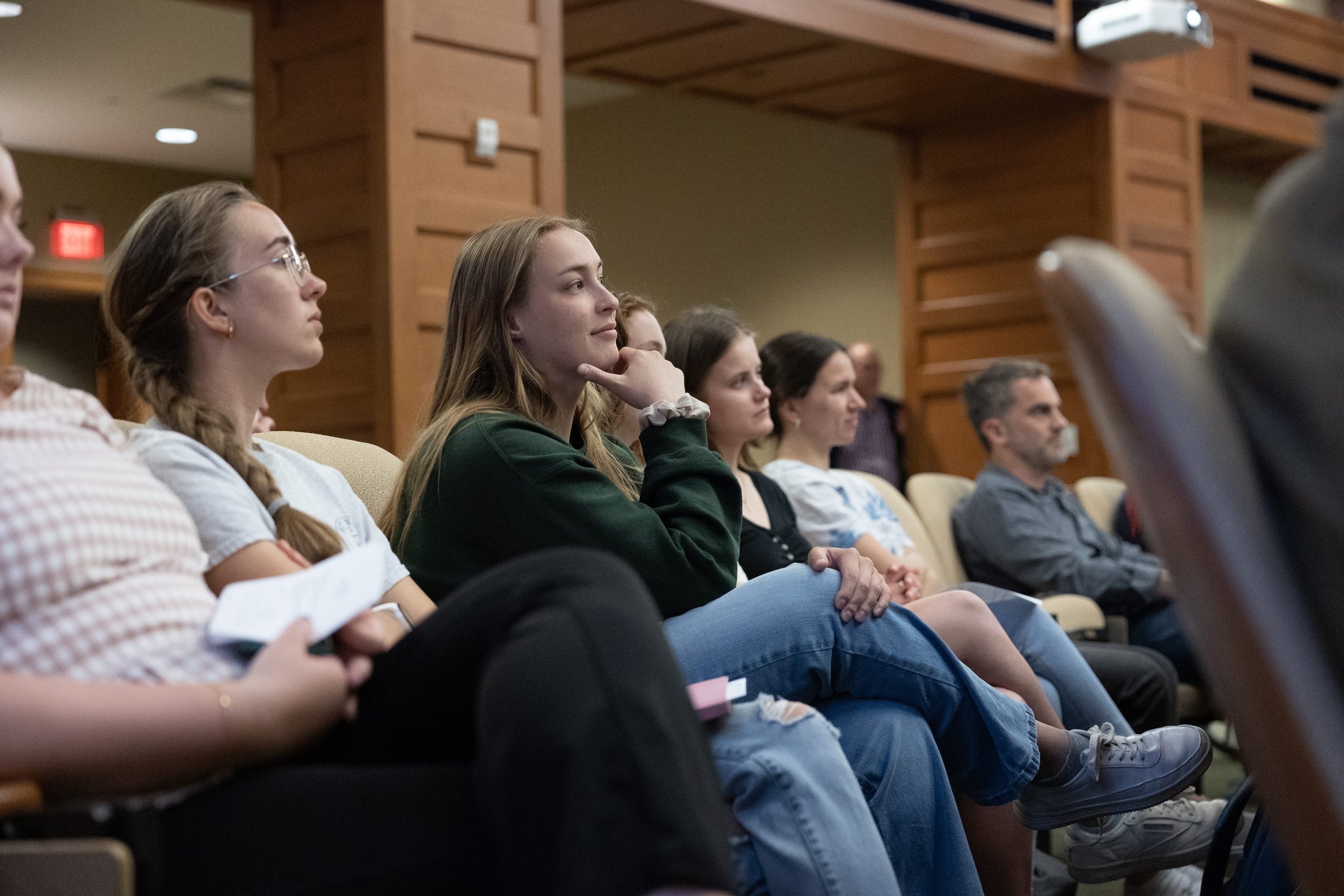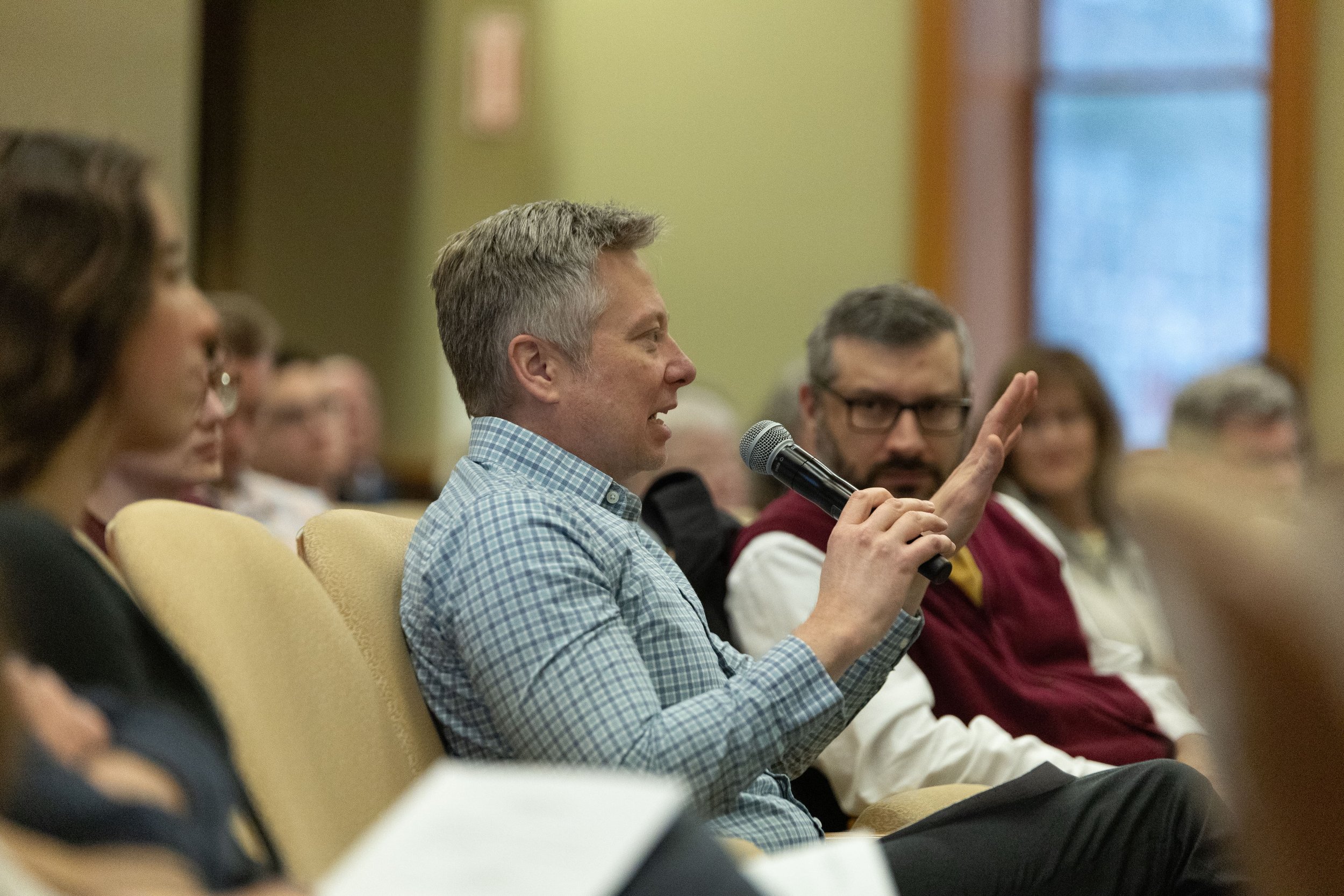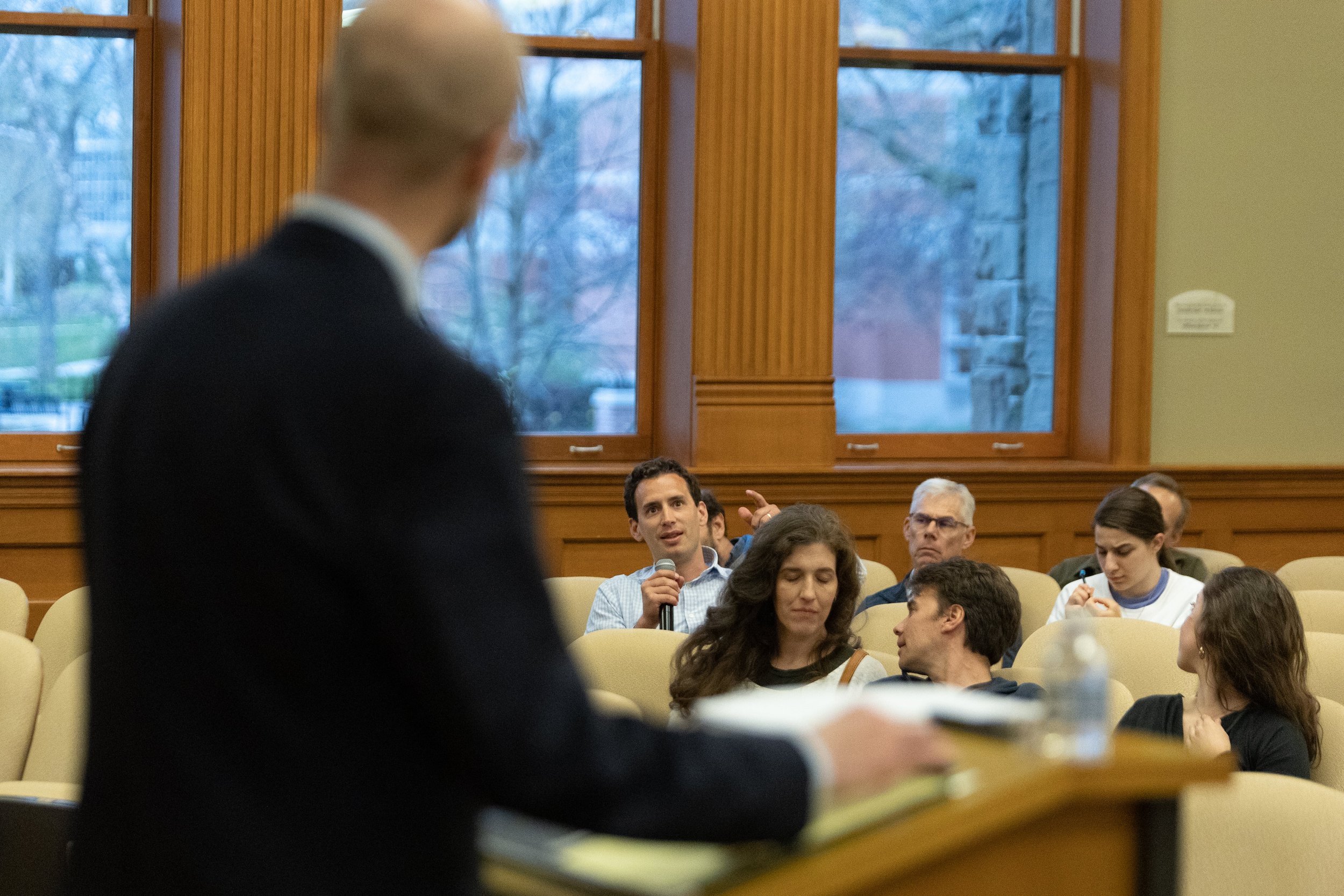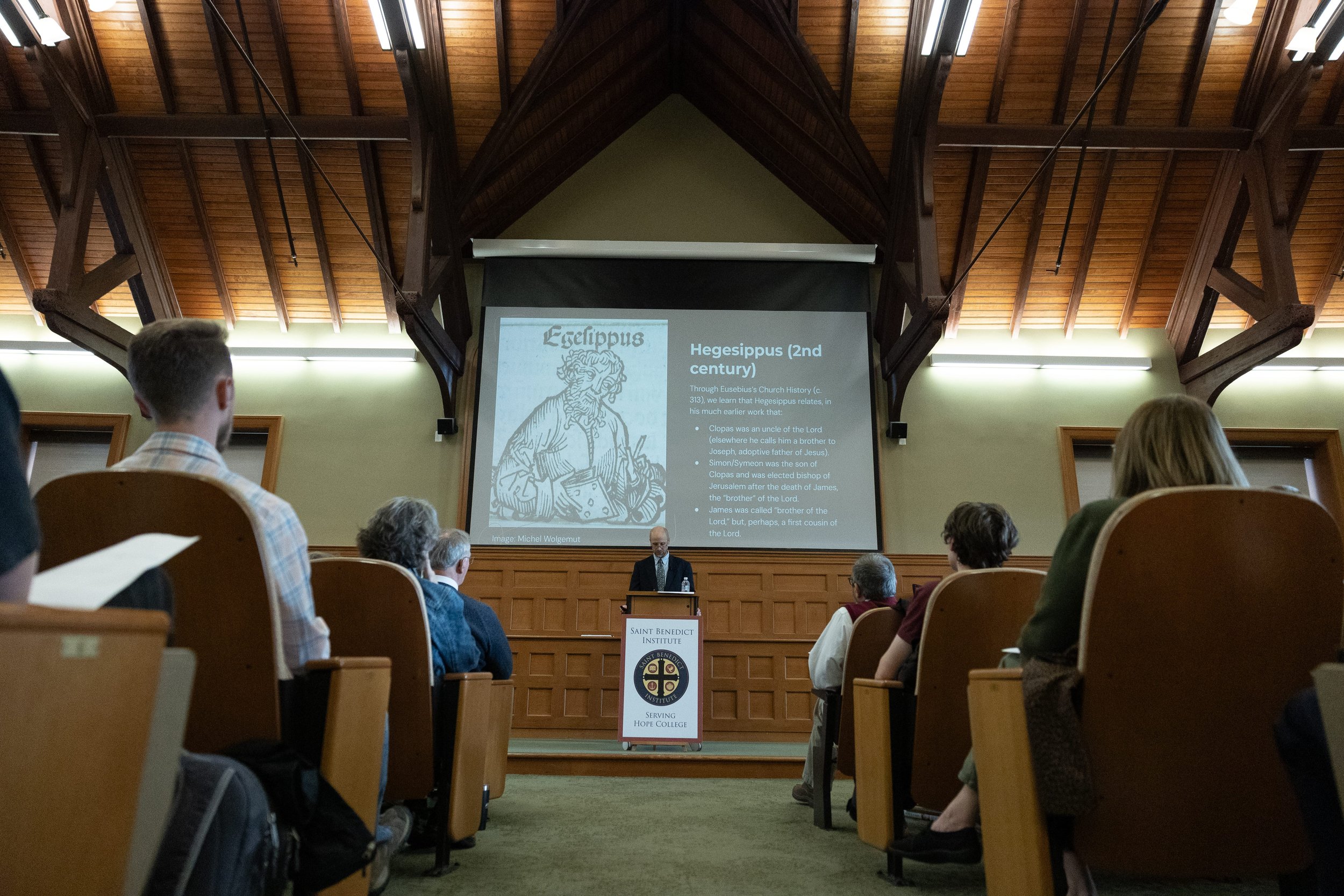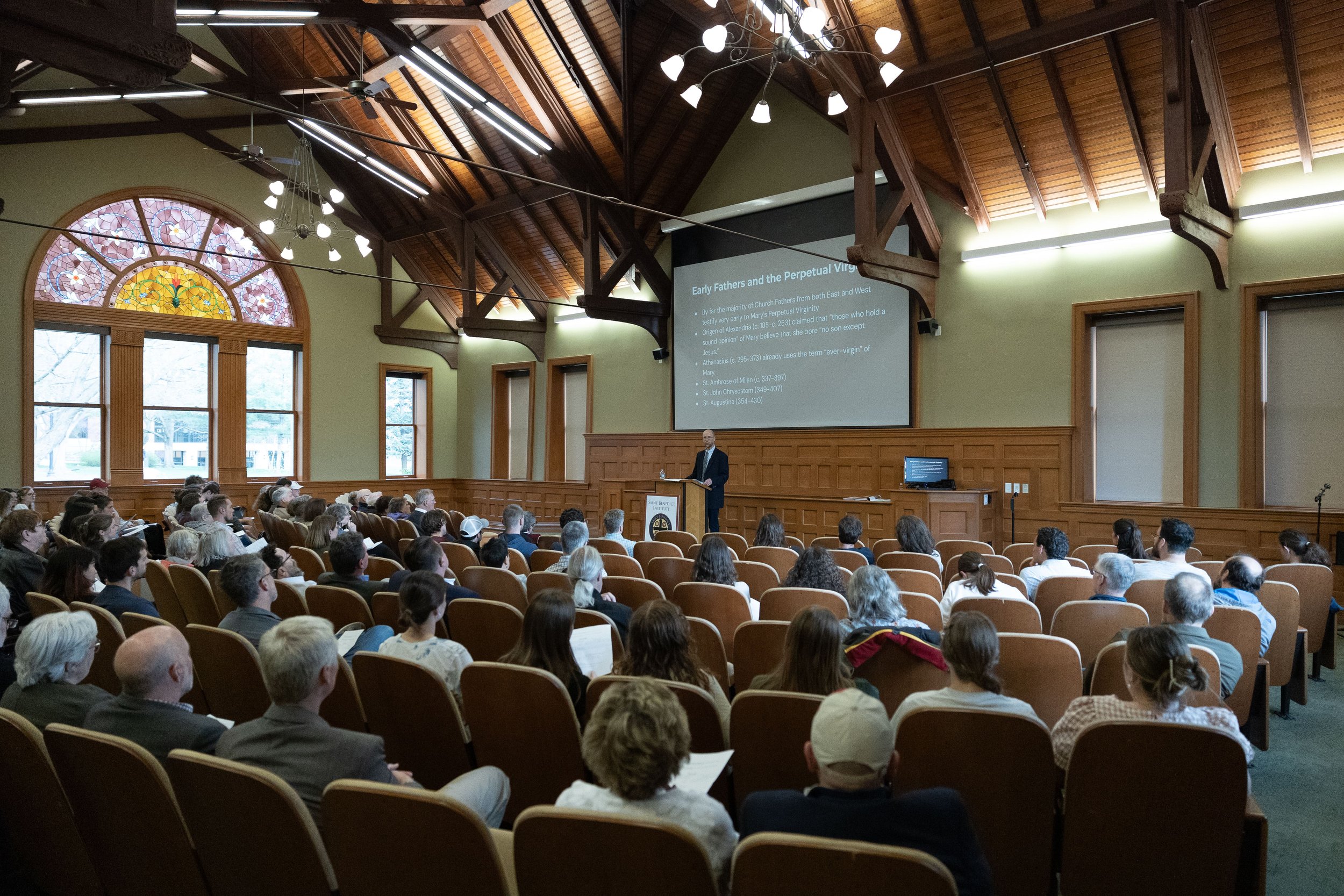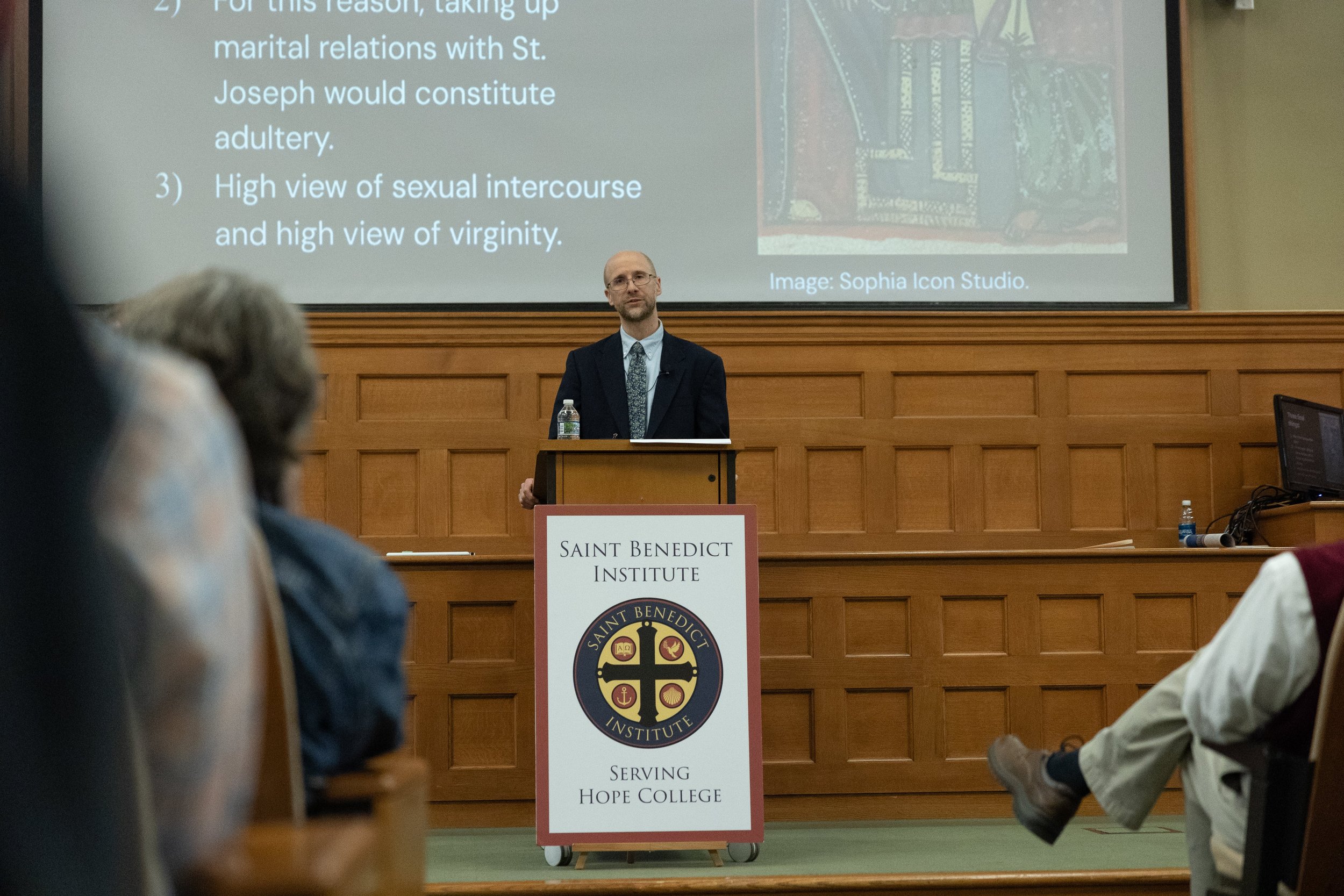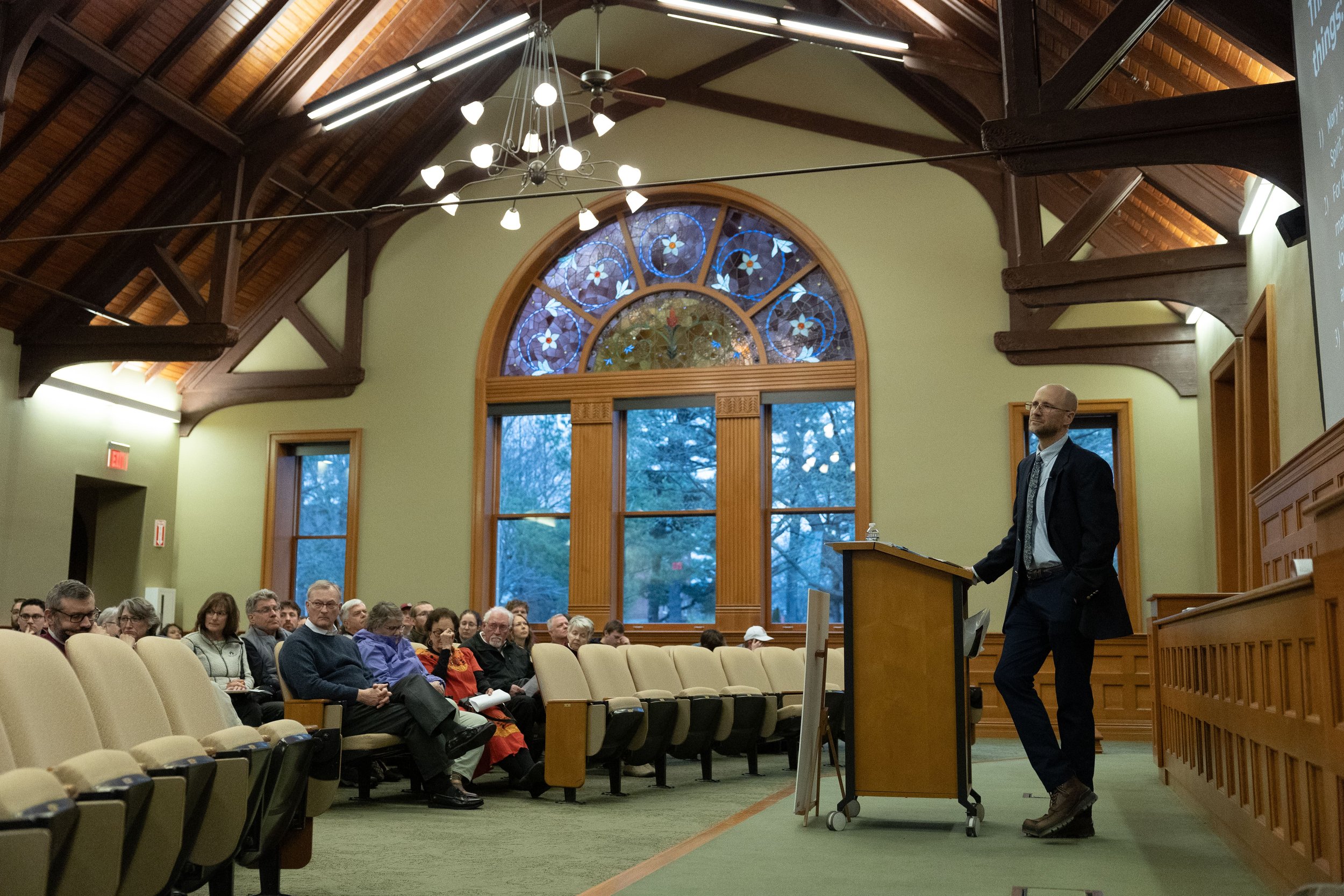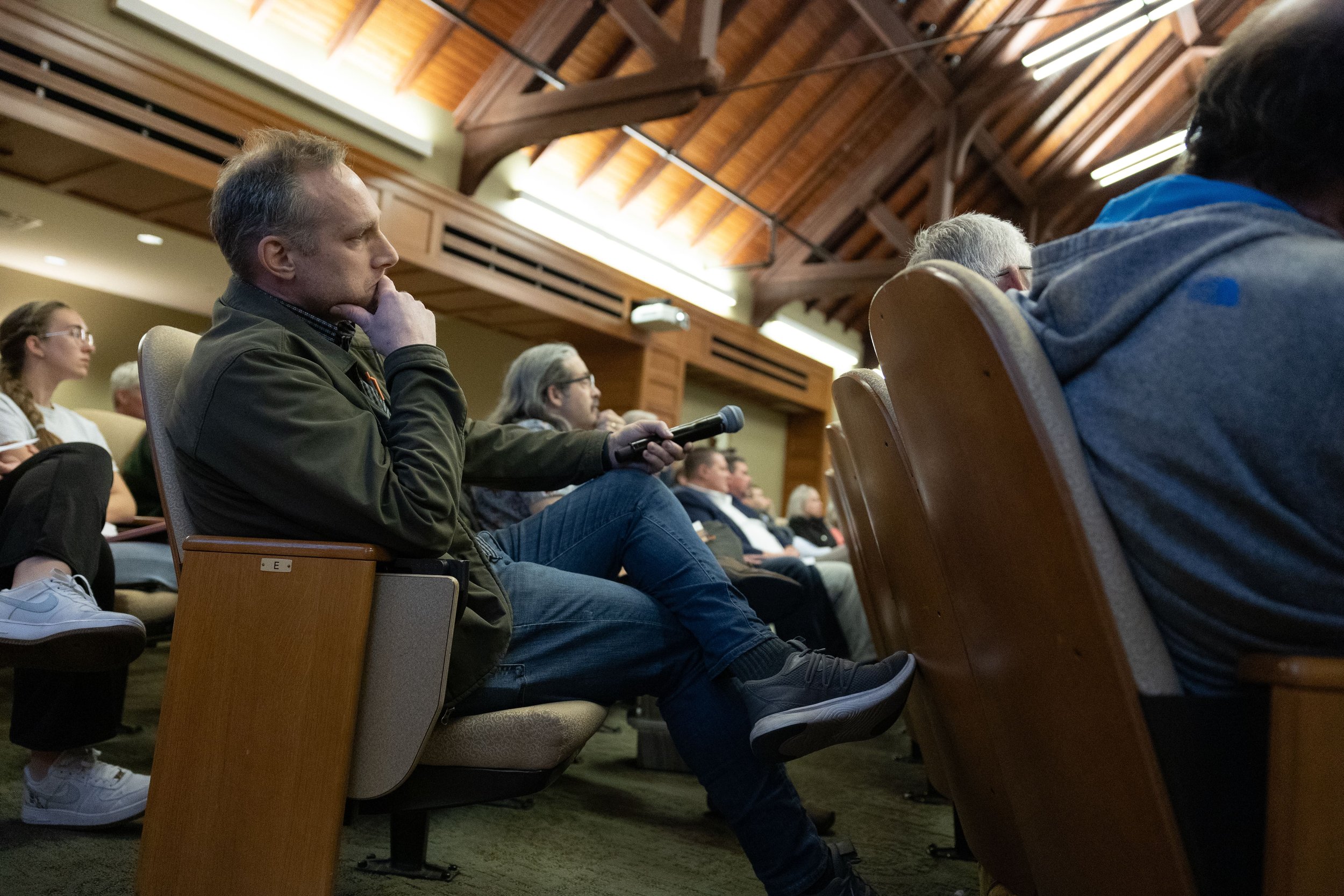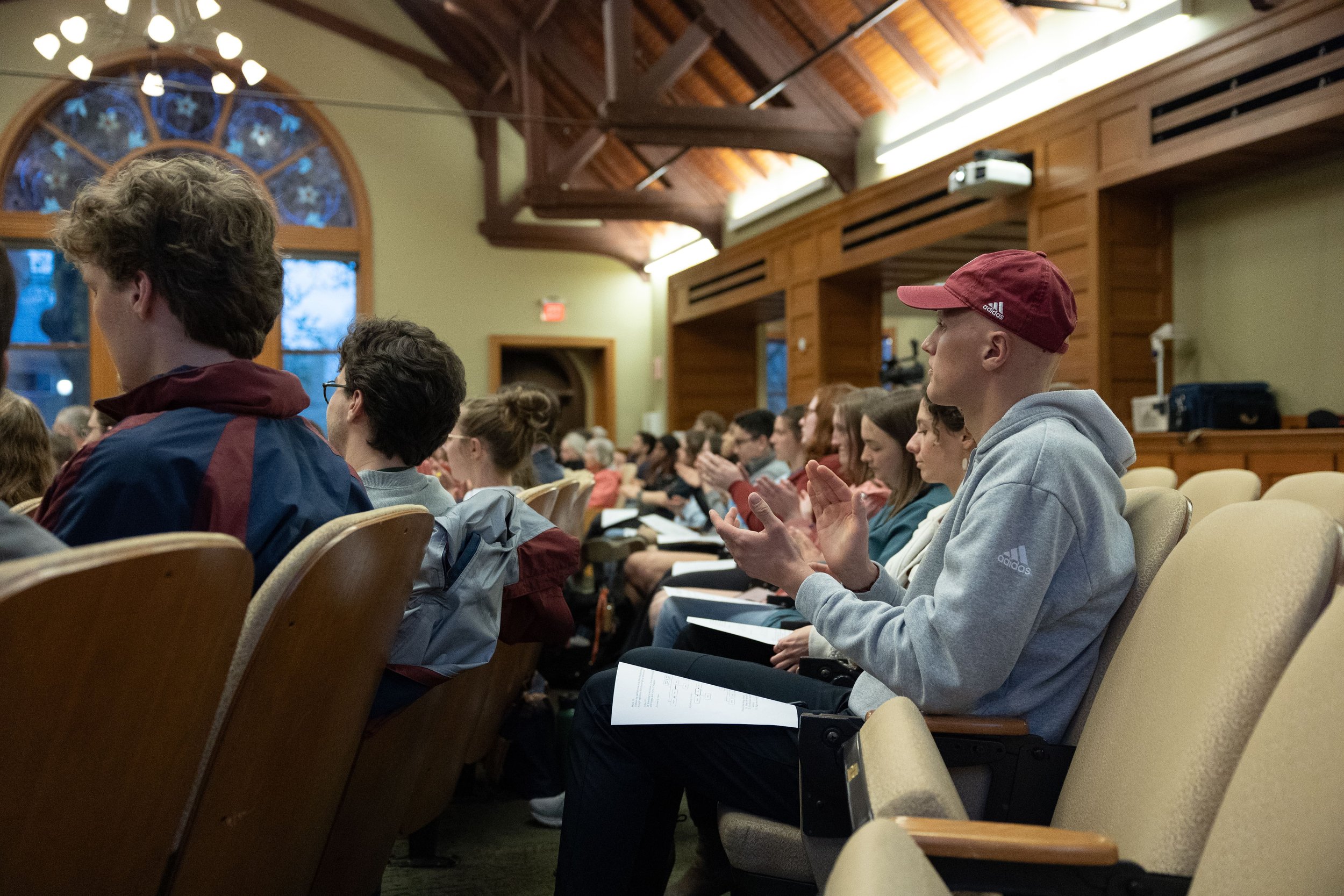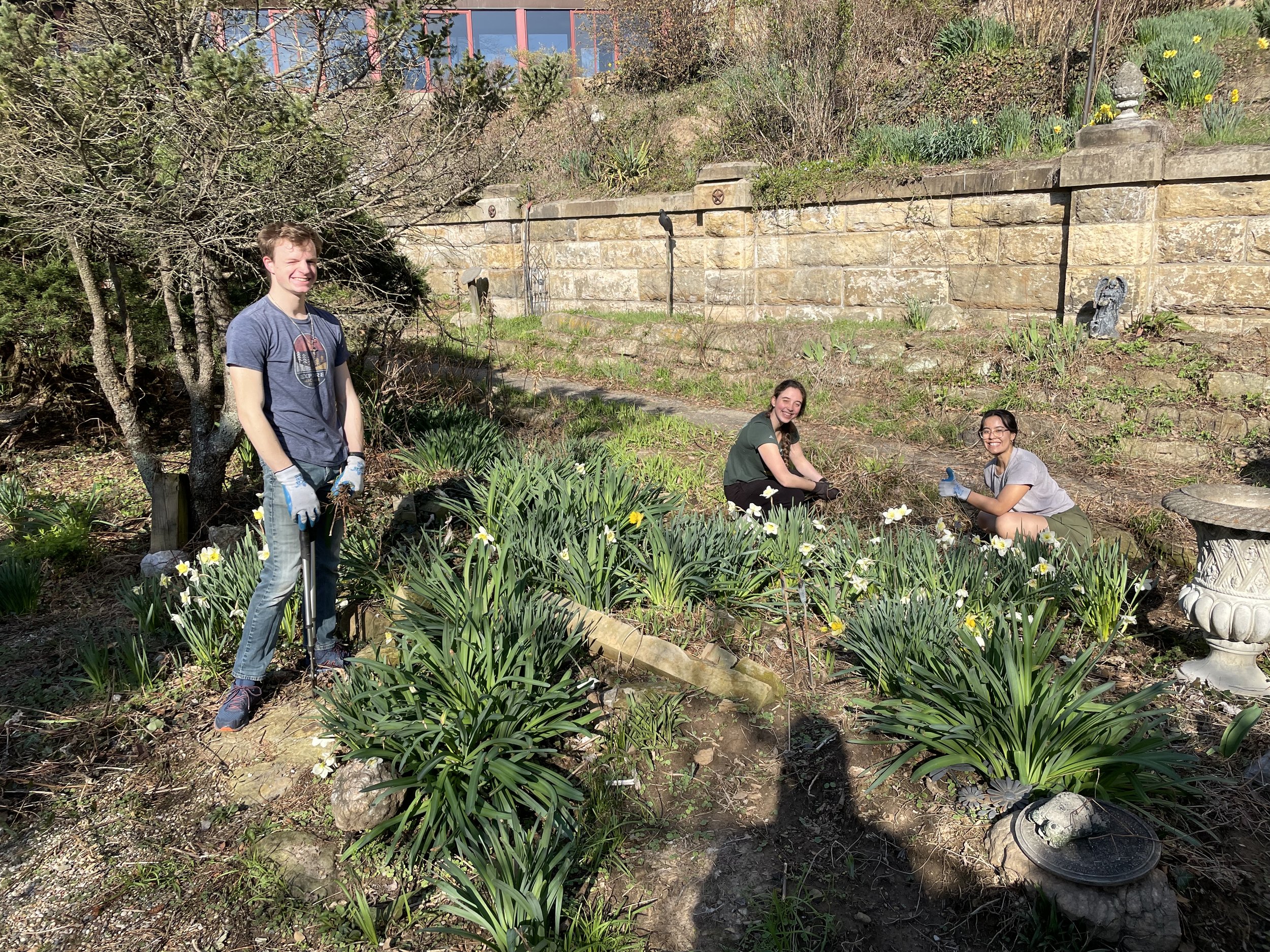Welcome to Hope College and the Saint Benedict Institute! We are excited to begin a new academic year with new and returning students.
Founded by Catholic scholars at Hope College, the Saint Benedict Institute seeks to promote and nurture intellectual work done from the heart of the Catholic Church, to foster an ecumenical community of Catholic Christians and friends committed to the renewal of culture, and to aid in the formation of intellectually and spiritually mature Christians by making available the riches of the Catholic tradition to Hope College and the wider community.
To achieve this mission, SBI provides daily Mass and regular Confession and Eucharistic Adoration on campus, spiritual direction, Bible study and other student groups, lectures and seminars, immersion trips, and more. As a ministry of nearby St. Francis de Sales Catholic Church, we have a covenant partnership with Hope College Campus Ministries and work closely with the Hope Catholics student organization and a group of FOCUS missionaries.
You can browse this website for more information, but here’s a quick summary of what you need to know going into the semester:
Who’s Who on Campus
Schedule of Services
Sunday Mass
5:00 p.m. - Winants Auditorium, Graves Hall
Daily Mass
Tuesday - 11:05 a.m and 9:00 p.m.
Wednesday - 12:05 p.m. and 9:00 p.m.
Thursday - 11:05 a.m.
Friday - 12:05 p.m.
Saturday - 12:05 p.m.
All daily Masses are in St. Anne Oratory (basement of Graves Hall)
Confessions
Saturday - 1-2pm or by appointment in Lubbers 223
nicholas.monco@saintbenedictinstitute.org
Adoration
Tuesday - 12 p.m. - 5 p.m. and 8 p.m. - 9 p.m. in St. Anne Oratory, Graves Hall






















